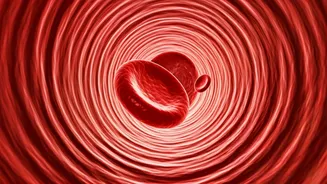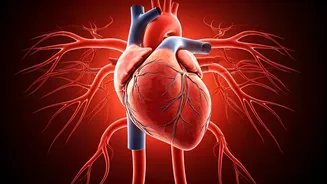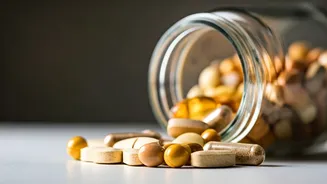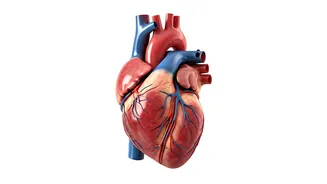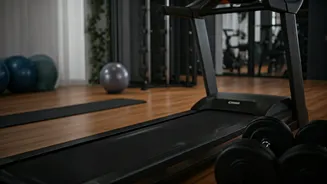Understanding Poor Circulation
Poor circulation, often caused by constricted blood vessels, reduced blood flow, or even damage to blood vessels themselves, can manifest in various ways.
Common indicators include cold hands and feet, which can signify decreased blood flow to the extremities. Other potential signs include numbness or tingling in the limbs, skin discoloration (such as a bluish tinge), and swelling. Sometimes, individuals may experience fatigue or muscle cramps, particularly during physical activity. Factors contributing to poor circulation range from lifestyle choices like smoking and a sedentary existence to underlying medical conditions such as diabetes, high blood pressure, or peripheral artery disease. It's crucial to identify the root causes for effectively improving blood flow and alleviating discomfort. Addressing these causes might involve lifestyle adjustments, dietary modifications, or seeking medical intervention if necessary. Being aware of the early warning signs helps in getting the right treatment. Addressing poor circulation can reduce the chances of developing health complications.
Dietary Strategies for Flow
What you eat plays a huge part in how well your blood flows. There are specific foods that you can consume that are known to improve blood flow. Adding certain items to your diet could make a noticeable impact. First, include foods rich in omega-3 fatty acids. Fatty fish such as salmon and mackerel are filled with these beneficial fats, which can help in reducing inflammation, preventing blood clots, and improving blood flow. Second, consider incorporating foods with high levels of antioxidants. Berries, dark chocolate, and leafy greens are packed with antioxidants. These help protect blood vessels and improve overall health. Third, consider adding iron-rich foods. Iron is essential for making hemoglobin, which transports oxygen throughout your body. Include foods such as lean meats, spinach, and fortified cereals to get enough iron. Finally, remember to stay hydrated, as dehydration can thicken blood, making it harder to circulate smoothly. Drinking enough water can improve blood volume.
Embrace Regular Exercise
Regular physical activity is one of the best ways to improve your circulation. Exercise helps to strengthen your heart and improve your blood vessels' ability to expand and contract. Engaging in various forms of exercise is key to this. Cardio exercises, such as brisk walking, running, cycling, or swimming, are great for boosting your heart rate and improving blood flow throughout your body. Aim for at least 30 minutes of moderate-intensity exercise most days of the week. In addition to cardio, incorporate strength training into your routine. Weightlifting or bodyweight exercises can help increase muscle mass, which further supports better circulation. Also, consider activities like yoga or Pilates, which can improve flexibility and encourage blood flow to all parts of the body. Even incorporating short bursts of movement throughout your day can be helpful. Take breaks from sitting every hour to stretch, walk around, or do some simple exercises. Consistent exercise not only benefits your circulation, but it also provides a wide range of additional health benefits, like improved mood and higher energy levels.
Lifestyle Adjustments to Make
Certain lifestyle changes can make a significant difference in boosting blood flow. First, smoking is one of the worst things you can do for your circulation. It damages blood vessels and reduces blood flow, so quitting smoking can have a huge positive impact. Second, manage your stress levels. Chronic stress can cause blood vessels to constrict, reducing blood flow. Practicing relaxation techniques, such as deep breathing, meditation, or yoga, can help manage stress and improve circulation. Third, it is helpful to maintain a healthy weight. Excess weight can put a strain on your circulatory system. Following a balanced diet and exercising regularly can help you achieve and maintain a healthy weight. Finally, limit your sitting time. Sitting for extended periods can slow down circulation. If your job requires prolonged sitting, try to get up and move around every hour. Take short walks, do some stretches, or use a standing desk to keep your blood flowing.
Supplements and Remedies
In addition to diet and lifestyle changes, certain supplements and natural remedies may help improve circulation. However, always consult with your doctor before starting any new supplement regimen. Some supplements that may be beneficial include: first, L-arginine, an amino acid, which helps to produce nitric oxide, a molecule that relaxes blood vessels and improves blood flow. Second, consider taking fish oil supplements, which contain omega-3 fatty acids, which can reduce inflammation and improve blood flow. Third, ginkgo biloba, an herb that is believed to improve blood flow to the brain and extremities. It's often used to treat conditions like peripheral artery disease. Also, explore using essential oils such as ginger, rosemary, or peppermint. These can be used topically or in aromatherapy to stimulate circulation. Remember that supplements and remedies work best when combined with healthy lifestyle choices. They should not replace medical treatment. Also, consult with a healthcare professional to ensure that any supplements you are considering won't interact negatively with any medications you are already taking.
